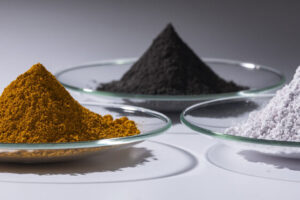As a complement and in some areas as an alternative to conventional plastics, bioplastics appear to be a logical and necessary step for a modern and forward-looking plastics industry. And they will also of course have their place at K 2013 in Düsseldorf from 16 to 23 October.
Any discussion of the pros and cons, the future role and the market potential of bioplastics makes little sense without prior clarification of the meaning of the prefix “bio-”, says Prof. Dr.-Ing. Christian Bonten of the Institute of Plastics Engineering at the University of Stuttgart, expressing his reservations. One prefix, that can have two meanings: bio-degradable and bio-based plastics.
Apart from small quantities of substances, biodegradable plastics consist of biodegradable polymers and additives. Special bacteria and their enzymes demonstrably convert biodegradable plastics into biomass, CO2 or methane, water and minerals as soon as the macromolecules have been sufficiently fragmented by other degradation mechanisms. For a plastic to be termed “compostable” in Europe, 90 % of it must degrade in clearly defined conditions into fragments smaller than 2 mm within 12 weeks. Only then can composting facilities operate cost-effectively and without disruption.
Biodegradable plastics are not necessarily made from renewable resources and can also be derived from mineral oil. Biodegradability therefore depends not on the raw material, but on the plastic’s chemical structure. Examples of biodegradable polymers are polylactides (PLA), polyhydroxyalkanoates (PHA), cellulose derivatives and starch as well as mineral-oil-based polybutylene terephthalate (PBAT) and polybutylene succinate (PBS). Non-biodegradable, on the other hand, are polyethylene (PE), polypropylene (PP), polyethylene terephthalate (PET) and polyamides (PA), for example.
Bio-based plastics
Bio-based plastics, on the other hand, are renewable resources derived from nature. However, these are not necessarily biodegradable as well. The adjective “bio-based” merely tells us that the carbon atoms in the molecule chains come from today’s nature and are thus “bio”. At present, bio-based plastics are derived from different hydrocarbons such as those found in sugar, starch, proteins, cellulose, lignin, bio-fats and oils. Bio-based polymers include polylactides (PLA), polyhydryoxybutyrate (PHB), cellulose derivatives (CA, CAB) and starch derivatives as well as, for example, bio-polyethylene (PE). The latter is derived entirely from Brazilian sugar cane, has the same properties as conventional polyethylene, but is not biodegradable. The at least to some extent bio-based but not biodegradable polymers also include natural-fibre-reinforced conventional plastics along with polyamides and polyurethanes.
Global output
In global polymer output, bioplastics have not so far figured highly in the roughly 235 mio. t of plastics materials. Because of the high market growth, European Bioplastics is forecasting world production capacity for bioplastics to reach roughly 5.8 mio. t by 2016. The study of the nova institute of March 2013 is forecasting output of over 8 mio. t by 2016 and roughly 12 mio. t by 2020 for bio-based plastics.
According to the manufacturers’ association European Bioplastics, biodegradable plastics at several 100,000 t accounted for the lion’s share of total global capacity for bioplastics in 2009. Since 2010, the growth rates for biodegradable plastics have been far outstripped by those for bio-based plastics. According to association forecasts and despite constant growth, they will account for only about a seventh of overall bioplastics output by 2016. The far larger share of bioplastics will then be bio-based but not biodegradable.
For their growing technical applications, plastics have to meet increasingly high standards. And bioplastics are no exception. As far as reproducibility is concerned, they still have some catching-up to do, and in terms of barrier properties, durability and compatibility with other biopolymers and additives, there is still plenty of room for improvement.
Applications today
Biodegradable plastics are usually employed in applications where degradability proves to be particularly useful. This applies, for example, in agriculture to mulch films and plant pots that do not have to be collected and transported elsewhere after use, but metabolise on the spot in the soil to form biomass. In private households, degradable kitchen waste bags have conquered a market and can be composted together with their contents.
Bio-based plastics are now also found in consumer electronics and automotive applications. For its Sai hybrid car only available in Japan, Toyota, for instance, has developed interior furnishings and equipment made of 80 % renewable raw materials, as of model year 2011. This has been made possible by the use of bio-PET, a plastic derived from sugar cane. Nonetheless, PLA and polyurethane (PU) foam based on soya are also found today in a vast diversity of automotive components. Practically all car manufacturers make use of bioplastics in their vehicles and are working towards increasing their use.
Share:








